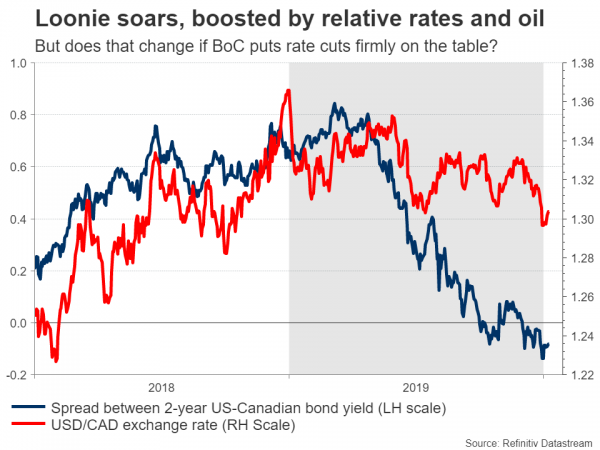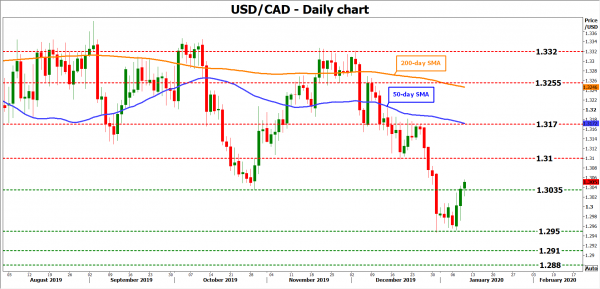The latest employment figures out of Canada will be released at 13:30 GMT on Friday. Recent data have been disappointing, which puts extra emphasis on the upcoming numbers to either confirm that the economy is losing steam or dispel such concerns. As for the loonie, the risks surrounding its reaction seem asymmetric, with any disappointment generating bigger losses compared to the corresponding gains in case the data beat expectations. Separately, BoC Governor Poloz will speak today at 19:00 GMT, and there’s a risk he strikes a dovish tone.
Diamonds in the rough
The Canadian economy defied the odds in 2019, taking very little damage from global trade tensions despite relying heavily on commodity exports. The local central bank was therefore among the only ones in the developed world that didn’t cut rates, which helped the Canadian dollar close the year as the best performing major currency. Strong gains in oil prices – the nation’s biggest export – certainly played a big role too.
Yet, this cheerful narrative came into doubt in the final weeks of 2019, as incoming data started to fall short of expectations. The labor market recorded its worst month since the global financial crisis in November, unexpectedly shedding 71k jobs, which pushed the unemployment rate up to 5.9%, from 5.5% prior. Retail sales also fell sharply in October, raising concerns about consumption.
Noise or trend?
The run of soft data has traders questioning the broader outlook for the economy – are these early signs of more weakness to come, or just ‘noise’ in an otherwise healthy trend? The upcoming employment data will be crucial in determining which side investors pick in this debate, and the loonie will move accordingly.
In December, the labour market is expected to have added 25k jobs, while the unemployment rate is forecast to tick down to 5.8%. Even though that would only make up for roughly one third of the positions lost in the previous month, it would still be a welcome development.
Lopsided reaction?
Now in terms of the risks surrounding the loonie’s reaction, they appear asymmetric. A potential disappointment could generate a bigger negative reaction in the currency, compared to the equivalent positive reaction if the jobs numbers beat forecasts.
The reasoning is how markets are positioned. Investors currently assign just a ~30% probability for a Bank of Canada (BoC) rate cut by June, so there is a lot more room for that chance to increase on weak data than there is for it to decline on strong numbers. In other words, markets are still of the view the BoC won’t act anytime soon, so anything that changes this narrative would come as a major surprise and could therefore generate a bigger reaction in the loonie.
Mind the Poloz risk too
Another similar risk for the loonie is a speech by BoC Governor Stephen Poloz today at 19:00 GMT. The BoC chief was optimistic about the economy when he last spoke, but considering the run of soft data since, there is a clear risk that his comments are on the dovish side this time. He could, for example, acknowledge the recent weakness and highlight that his central bank would consider cutting rates if it persists, which also presents a downside risk for the loonie.
Looking at dollar/loonie technically, initial resistance to advances may be found at 1.3100, where an upside break could open the door for a test of 1.3170.
On the downside, the first target for the bears may be the 1.3035 zone. If they pierce below, the 1.2950 area may come into play ahead of the 1.2910 hurdle, marked by the low on October 17, 2018.




 Signal2forex.com - Best Forex robots and signals
Signal2forex.com - Best Forex robots and signals




